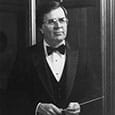At the beginning of my practice session, I make a quick assessment to determine areas that need the most attention. Some questions to ask are: is it a good tone day, do my fingers feel agile, is my low register weak? From the answers to these types of questions, I design my practice time accordingly. At the end, I might play something I love or try improvising on a melody. I look at the first 30 minutes of practice as a time to reunite with the instrument on a daily basis.
Tone
At a recital, the first aspect that reaches a listener is how beautiful the tone is, what a singing quality the sound has, how pleasing the vibrato is, or how expressively the performer plays. That being the case, an emphasis on tone in warmups is crucial.
To center the sound, flutter tonguing and singing and playing are two techniques that I rely on heavily. Another way to find the ring in your sound, especially in the low to middle register, is humming very quietly with the flute in place, using a flute embouchure and listening for a ringing, almost buzzing sound without adding air behind the fingered note. You will feel the flute resonating in your hands. The size and shape of the aperture that gets the best ring seems to set the embouchure for the best result when you then actually play the note.
As for vibrato, if you are an experienced player, regular vibrato exercises may not be necessary, but for those who are in the developmental stages, breath attacks or throat staccatos can be helpful in activating the vocal folds to keep vibrato from getting too wide and uncontrolled. Since there are many articles on this topic, I will just advocate for an awareness of speed and width of vibrato through experimentation throughout one’s warmups and practice sessions. Record yourself frequently and listen for any overemphasized wobbles or pitch variations that are too extreme. Also do not forget to practice without vibrato to center your tone and pitch.
Exercises
In all of these exercises, fill each interval with substance, playing connect the dots from note to note. As Joseph Mariano said in my lessons, “Two notes are like two pieces of bread. What you put between them is what kind of sandwich it is.” At this point, if I did not fill the spaces, he would say “That sounds like the bread just has mustard on it.”
Every day, I start with my favorite – the Kincaid Vocalise. Notice that each exercise starts on the fifth note (dominant) of the scale and descends a V7 chord.
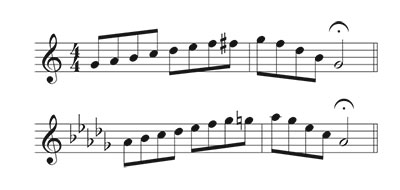
Using a moderately slow tempo, I try to make the exercise use one entire breath while stretching the top turnaround for expression. Also, a challenge is to hold the last note and decrescendo from f to pp concentrating on pitch and a beautifully tapered release. Progress upward by moving up a half step to the next key and continuing until you are starting on the G on top of the staff.
Another famous exercise is Marcel Moyse’s Long Tones from De la Sonorité. Practice the patterns both descending and ascending then add variations of dynamics and non-vibrato/vibrato on the repeats.
In Samuel Baron’s Low Register Exercise make sure to negotiate the pattern accurately. Start on C in the staff and work down with the lowest starting note being F if you have a low B key. Adding various dynamic nuances is great for control of tone quality at different levels and for proper pitch placement as you crescendo or decrescendo.
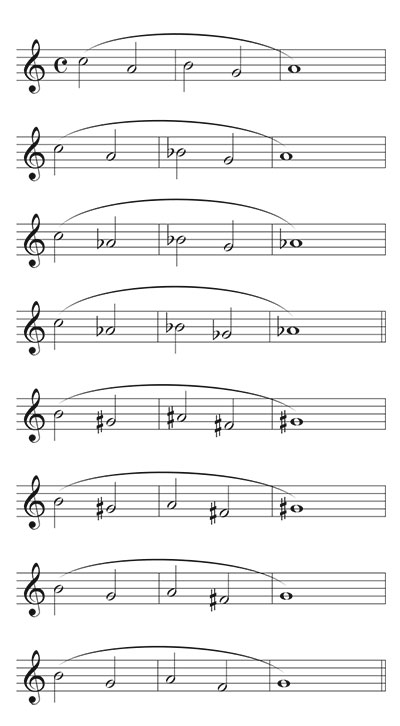
Trevor Wye’s chromatic exercise is found in the Volume 1: Tone in the Practice Books Series. Flutter tonguing on the long notes in this exercise helps get the air moving.
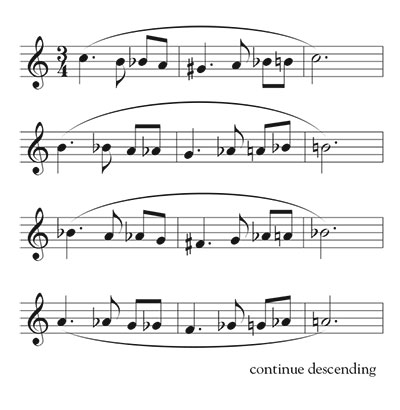
Flexibility
My next step is flexibility exercises and harmonics. octave slurs with rhythms are a favorite. Also try this starting on the upper note and descending first. This loosens the lips and is also good to do with the tuner, checking your placement on the first longer notes to establish a good tonal center.
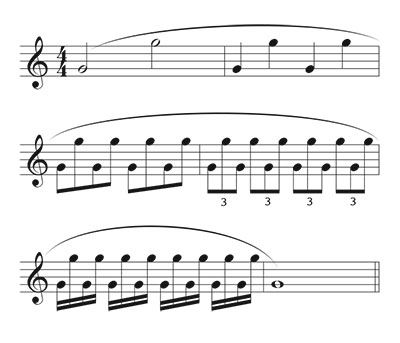
For harmonics, I stick with the first three partials to not force the embouchure to struggle with the ones that are too high in the beginning of my practice. Start with the fundamental (I start with low D), release and move to the second partial, release and move to the third partial. Then try the exercise below. Some good exercises can be found in The Flute Scale Book by Patricia George and Phyllis Louke (p. 3.03-3.05)
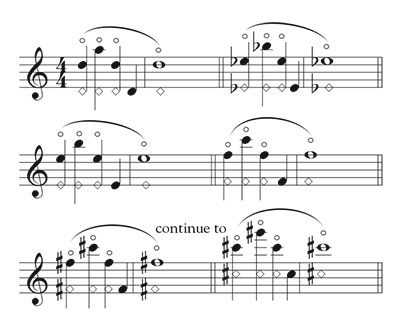
Sometimes I feel my practice is more productive if I actually use the written word by having a technique book in front of me – even if I have these exercises memorized. It seems to keep me on track. The ones I use the most are Daily Exercises by André Maquarre, Twenty-Eight Day Warm Up Book by Paul Edmund-Davies, and of course Taffanel et Gaubert and Reichert. Sequencing through all keys is challenging and builds familiarity with all majors and minors. The Maquarre book also has lots of accidentals to maneuver which keeps the brain working.
Technique
The use of the word “technique” here refers to finger dexterity which means scales, scales and more scales. My clarinet colleague at Texas State, Vanguel Tangarov, says “You are only as good as your scales.” A truer statement has never been made. Since there are thousands of ways to go about practicing scales and triads, I will mention a couple of exercises you may not know. Here is the most recent one I developed. Play slurred listening for evenness of fingers and homogeneity of sound.
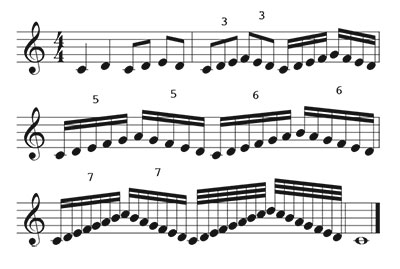
The following is one I learned from some precocious students in Bulgaria when I did masterclasses there a few years ago.
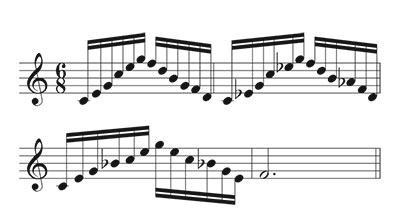
It includes triads and seventh chords in all keys that travel around the circle of fifths using this pattern – major triad, dominant seventh, minor triad, diminished seventh, dominant seventh built on starting note to take you to the next key.
Articulation
The regimen of varied articulations applied to Taffanel et Gaubert No. 4 can be applied to any scale routine. My favorite is to slur on the ascending pattern and double tongue on the descending pattern. Starting with slurs gets the air and fingers moving and then articulating on the way down challenges the coordination between tongue and fingers. My own exercise for this has several steps using fragments of scales, first slurred then tongued which finally leads to this:
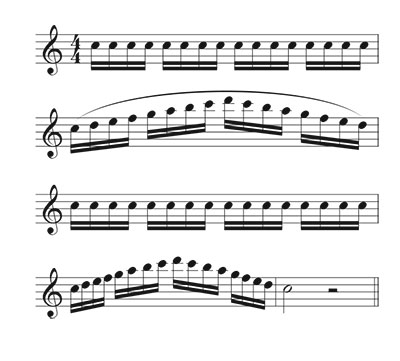
Other sources for more details on flute fundamentals and exercises include: The Gilbert Legacy by Angeleita Floyd, Bel Canto Flute: The Rampal School by Sheryl Cohen, The Flutist’s Vade Mecum by Walfrid Kujala and The Simple Flute by Michel Debost.
The most important thing to remember is to vary your approach so that you are always engaged with the process. Keep things fresh and stay inspired by changing things up regularly. There are thousands of exercises to try, and you can always invent your own. Take the ones you have from others, vary them, use them as taking-off points, and then improvise and find your own voice.


